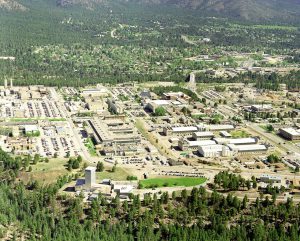Nuke Watch New Mexico filed a lawsuit against Los Alamos National Labs and DOE in January of 2016. This lawsuit is over LANL and DOE's failure to meet cleanup milestones under the 2005 consent order. The complaint alleges twelve violations of a 2005 Consent Order governing cleanup at the Los Alamos National Laboratory (LANL). Those violations could result in potential penalties of more than $300 million dollars that would go to the state if only the New Mexico Environment Department (NMED) were to enforce them.
“The nuclear weaponeers plan to spend a trillion dollars over the next 30 years completely rebuilding U.S. nuclear forces. Meanwhile, cleanup at the Los Alamos Lab, the birthplace of nuclear weapons, continues to be delayed, delayed, delayed. We are putting the weaponeers on notice that they have to cleanup their radioactive and toxic mess first before making another one for a nuclear weapons stockpile that is already bloated far beyond what we need. Real cleanup would be a win-win for New Mexicans, permanently protecting our water and environment while creating hundreds of high paying jobs.” -Nuke Watch Director Jay Coghlan
NukeWatch filed a FOIA request for full PERS for 2019 on January 27, 2020 and received the documents November 18, 2022, after filing the lawsuit.
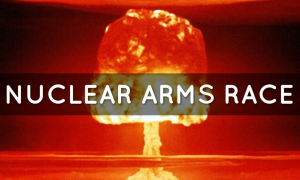
Nuclear Watch New Mexico is among a coalition of community and public interest groups that has filed a lawsuit against the U.S. Department of Energy (DOE) and the National Nuclear Security Administration (NNSA), challenging the federal agencies’ decision not to examine the possible wider impacts of Los Alamos National Laboratory and Savannah River Site in South Carolina producing these warhead triggers, also known as pits.
A PLUTONIUM PIT IS THE HEART AND TRIGGER OF A NUCLEAR BOMB. PRODUCTION INVOLVES THE EXTENSIVE PROCESSING AND HANDLING OF EXTREMELY HAZARDOUS AND RADIOACTIVE MATERIALS. IN 2018, THE FEDERAL GOVERNMENT CALLED FOR PRODUCING AT LEAST 80 PITS PER YEAR BY 2030, INCLUDING 30 OR MORE AT LOS ALAMOS AND 50 OR MORE AT THE SAVANNAH RIVER SITE.
We have pushed for a full program review since 2019, reaching out to DOE and NNSA on six occasions over the legal requirement for a new or supplemental broad, nationwide programmatic environmental impact statement, or PEIS, for producing the larger number of plutonium pits at Los Alamos and the Savannah River Site. NNSA has only conducted fragmented and piecemeal reviews, looking at sites separately rather than examining their combined impacts and risks.
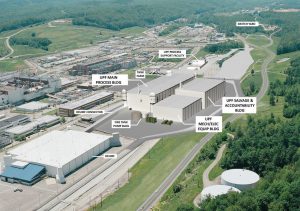 OREPA, NukeWatch, and NRDC have filed a lawsuit against the Uranium Processing Facility (UPF). The UPF is dubbed the 'tip of the spear' for the trillion dollar nuclear modernization project. This case concerns grave risks that the National Nuclear Security Administration ("NNSA") is taking but failing to consider regarding the safety and potential environmental impacts of America's nuclear weapons program, in violation of the National Environmental Policy Act.
OREPA, NukeWatch, and NRDC have filed a lawsuit against the Uranium Processing Facility (UPF). The UPF is dubbed the 'tip of the spear' for the trillion dollar nuclear modernization project. This case concerns grave risks that the National Nuclear Security Administration ("NNSA") is taking but failing to consider regarding the safety and potential environmental impacts of America's nuclear weapons program, in violation of the National Environmental Policy Act.
In particular, this case challenges the NNSA's refusal to prepare a Supplemental Environmental Impact Statement ("SEIS") to consider important new information about the serious vulnerability of a new design for a Uranium Processing Facility ("UPF") at the Y-12 National Security Complex ("Y-12") in Oak Ridge, Tennessee. This new design is significantly different from the one the agency chose to analyze in 2011.
Most importantly, the NNSA decided to save money on the modernization of the aging Y-12 Complex by not building a single new building to house the entire UPF, but instead constructing several new buildings and continuing to use old and increasingly deteriorating buildings for processing nuclear weapon s components.
Also, this case challenges the NNSA 's plans to implement this major change in the UPF design without considering in a NEPA analysis crucial new information about the increased odds of large earthquakes and the risk that such an earthquake may cause these decrepit buildings to collapse or even explode.
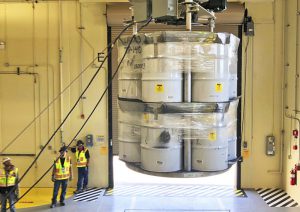 In January 31, 2018, DOE and Nuclear Waste Partnership, LLC (NWP) (WIPP co-permittees) file a “Volume of Record” permit modification request with NMED using a new way of calculating the amount of waste disposed of at WIPP. (Instead of counting the outside volume of each container as had been done for decades, DOE can decide the amount of waste in each container.) This change decreased the volume of waste calculated to be at WIPP by about 30 percent.
In January 31, 2018, DOE and Nuclear Waste Partnership, LLC (NWP) (WIPP co-permittees) file a “Volume of Record” permit modification request with NMED using a new way of calculating the amount of waste disposed of at WIPP. (Instead of counting the outside volume of each container as had been done for decades, DOE can decide the amount of waste in each container.) This change decreased the volume of waste calculated to be at WIPP by about 30 percent.
DOE has provided no new environmental impact statements about the effects on the public of increased disposal and transportation since 1997. They have not done any exposure studies for this current volume increase, as required by RCRA, since then either. Nor have they researched to see if the increase would cause disparate effects on minority communities near the site or near the transportation routes. (It is as important to understand effects along the transportation routes to WIPP as understanding exposures from the WIPP site itself. Perhaps even more important, as almost all the negative health effects from the entire WIPP project during normal operations occur along the transportation routes. )
In January 2019 Concerned Citizens for Nuclear Safety (CCNS), Nuclear Watch New Mexico (NWNM), and Southwest Research and Information Center (SRIC) file appeals in the New Mexico Court of Appeals, asking the court to overturn the “Volume of Record” permit modification.
Throughout the 1960s, government scientists searched for an appropriate site for radioactive waste disposal, eventually testing a remote desert area of southeastern New Mexico where, 250 million years earlier, evaporation cycles of the ancient Permian Sea had created a 2,000-foot-thick salt bed.
In 1979, Congress authorized the U.S. Department of Energy’s (DOE) Waste Isolation Pilot Plant (WIPP). The WIPP facility, located 26 miles southeast of Carlsbad, N.M., was constructed during the 1980s. Congress limited WIPP to the disposal of defense-generated TRU wastes. In 1998, the U.S. Environmental Protection Agency (EPA) certified WIPP for safe, long-term disposal of TRU wastes.
Transuranic, or TRU, waste began accumulating in the 1940s with the beginning of the nation’s nuclear defense program.
WIPP was closed for nearly three years after a February 2014 radiation release, and 2018 marked its first full year since reopening of receiving TRU waste shipments. It resumed taking shipments of waste from DOE generating sites in April 2017 and received 133 by the end of the year. The Energy Department projects roughly 400 shipments for 2019. It could release a more detailed report on those expectation in coming weeks.
By comparison, WIPP took in 724 shipments in 2013, its last full year or operation prior to the accident. Energy Department Carlsbad Field Office Manager Todd Shrader does not expect anything close to those numbers before a new underground ventilation system goes into operation in fall 2021.
About 97 percent of the anticipated contact-handled TRU waste expected to eventually find its way to WIPP will come from large-quantity sites such as Hanford, Idaho, LANL, Oak Ridge, and SRS, according to DOE’s recently released Annual Transuranic Waste Inventory Report for 2018. Likewise, about 95 percent of the more radioactive remote-handled TRU waste is expected to come from these sites.
* On April 30, 2020, the National Academy of Sciences (NAS) released its Final Report that Congress requested on the proposed “dilute and dispose” method proposed for 34 metric tons or more of surplus plutonium from nuclear weapons. The Report includes Figure S-5 that shows that without the Volume of Record (VOR), waste proposed for WIPP is more than 150 percent of the legal limit and that the waste will exceed the legal limit even with the VOR recalculation.
WIPP Volume of Record Lawsuit News
Parties Prepare to Start Mediation Over WIPP Waste Volume
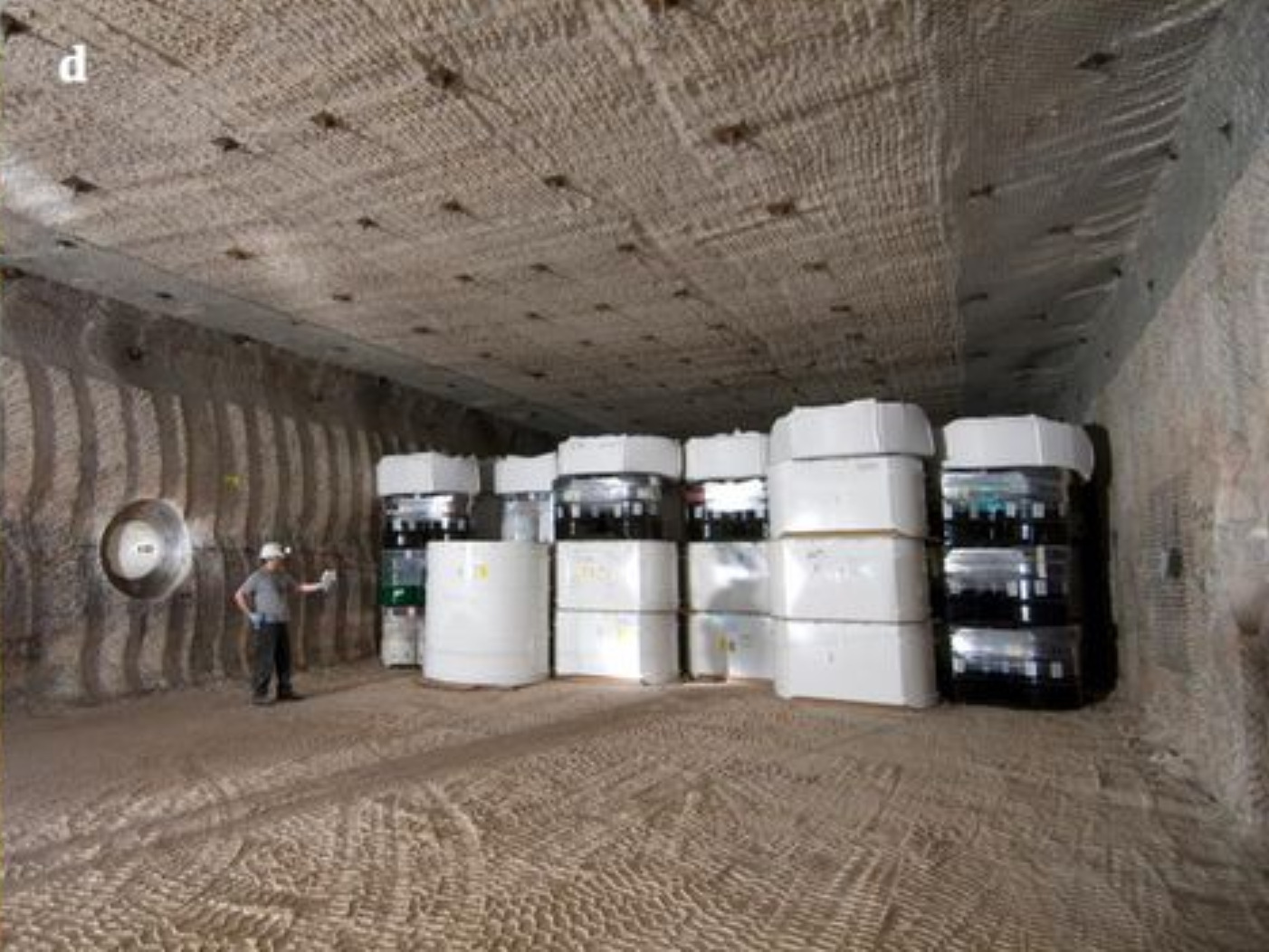
Face-to-face mediation is expected in June between public interest groups and the New Mexico Environment Department over changes to the way waste volume is calculated underground at the Energy Department’s Waste Isolation Pilot Plant (WIPP).
exchangemonitor.com | May 23, 2019
The New Mexico Court of Appeals often encourages mediation in cases involving state agencies in hopes parties can bridge their differences outside the courtroom, officials say.
A lawsuit filed in January by Nuclear Watch New Mexico and the Southwest Research and Information Center (SRIC), which challenged a change to the state hazardous waste permit for WIPP, has been stayed pending the talks.
New Mexico Court of Appeals Judge Linda Vanzi issued the stay May 2 and called for the parties to file a status report on the mediation by July 31.
The mediation itself should occur in late June, SRIC Administrator Don Hancock said by email.
Then-state Environment Department Secretary Butch Tongate in December authorized a permit modification allowing DOE to stop counting empty spaces between container drums as transuranic waste. The order adopted the findings of state hearing officer, who recommended waste volume counted against the disposal cap set by the 1992 WIPP Land Withdrawal Act should cover only the actual waste inside containers.
Opponents fight back against WIPP permit change on waste volume tracking, appeal filed
“Scott Kovac of Nuclear Watch New Mexico said the change should not have been approved without an explanation from the DOE about how to address lost space after a contamination incident in 2014 that led to a three-year closure of the facility.”
By Adrian Hedden Carlsbad Current-Argus
Two advocacy groups in New Mexico filed a legal appeal Thursday seeking to undo a New Mexico Environment Department order that allows the Energy Department to change the way it records underground transuranic waste volume at its Waste Isolation Pilot Plant (WIPP) near Carlsbad.
The Southwest Research and Information Center (SRIC) and Nuclear Watch New Mexico (NWNM) filed their notice of appeal in the New Mexico Court of Appeals to block the modification to WIPP’s state hazardous waste permit.
While it technically takes effect this month, as a practical matter the new counting system won’t be instituted right away because DOE has not drafted its policy on implementation, said SRIC Administrator Don Hancock by email.
A Dec. 21 order from then-state Environment Department Secretary Butch Tongate authorized DOE to stop recording empty spaces between container drums as waste. The order adopted the findings of state Hearing Officer Max Shepherd, who recommended waste volume counted against the disposal cap set by the 1992 WIPP Land Withdrawal Act should cover only the actual waste inside containers.
“The modification is contrary to federal law, changes 20 years of practice in the WIPP Permit and operations, ignores the record in the proceeding including testimony in three days of hearings, and violates the New Mexico-DOE Consultation and Cooperation Agreement,” Hancock said in a press release.
He called on New Mexico’s new governor and environment chief not to back the change in court, but rather overturn it. Given the official implementation date is Jan. 20, any administrative delay or rejection would happen soon, he added.
Advocacy Groups Go to Court to Stop WIPP Waste Volume Accounting Change
“Rather than pursuing the permit modification, the Department of Energy should comply with the legal capacity limit and begin a public process to explain what additional waste it wants to bring to WIPP and how it intends to address the loss of disposal space that cannot be used because of the significant underground contamination,” said Scott Kovac, operations and research director of NukeWatch.
BY: WAYNE BARBER
Two advocacy groups in New Mexico filed a legal appeal Thursday seeking to undo a New Mexico Environment Department order that allows the Energy Department to change the way it records underground transuranic waste volume at its Waste Isolation Pilot Plant (WIPP) near Carlsbad.
The Southwest Research and Information Center (SRIC) and Nuclear Watch New Mexico (NWNM) filed their notice of appeal in the New Mexico Court of Appeals to block the modification to WIPP’s state hazardous waste permit.
While it technically takes effect this month, as a practical matter the new counting system won’t be instituted right away because DOE has not drafted its policy on implementation, said SRIC Administrator Don Hancock by email.
A Dec. 21 order from then-state Environment Department Secretary Butch Tongate authorized DOE to stop recording empty spaces between container drums as waste. The order adopted the findings of state Hearing Officer Max Shepherd, who recommended waste volume counted against the disposal cap set by the 1992 WIPP Land Withdrawal Act should cover only the actual waste inside containers.

